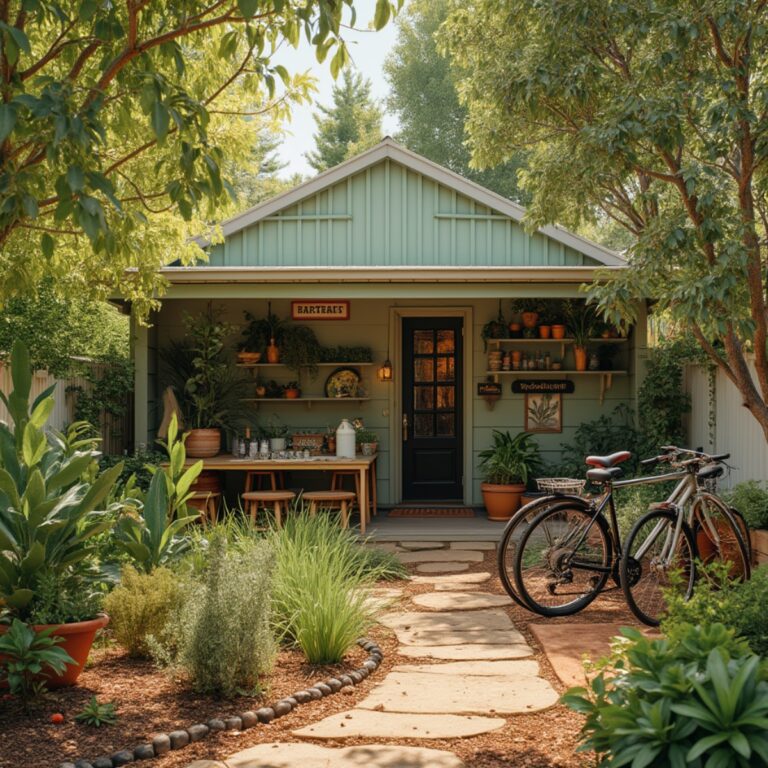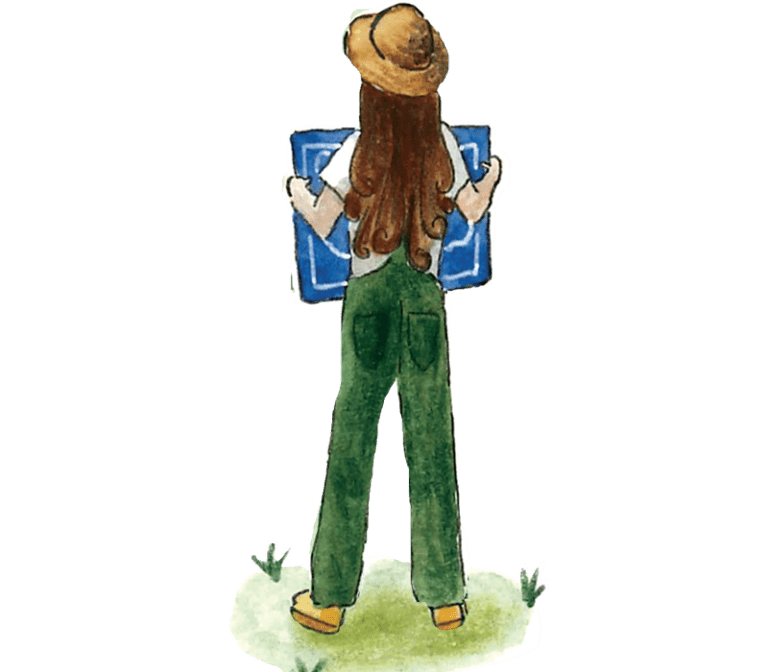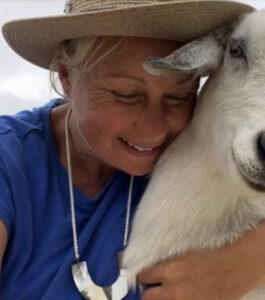Tuesday 8th July, 2025
Podcast: Greenstead Life – Where the Garden Meets the Dream
Welcome to Episode 5 of the Greenstead Life Podcast, where we step into the living story of edible native gardens—places that are as nourishing as they are beautiful. This episode invites you to reimagine your garden not only as a source of food, but as a living, breathing part of the ecosystem—where native bush foods connect us to Country, culture, and each other. It’s about planting with heart, designing for resilience, and restoring landscapes that remember how to take care of themselves.
From soft-leafed warrigal greens to the zing of finger limes, each plant we explore carries flavour, function, and story. Whether you’re new to bush foods or already tending an edible native patch, this episode will feed your imagination and perhaps even your next meal.
Now, settle in beneath the wattle and press play on a garden conversation that begins with a whisper and grows into something delicious.
🎙 Full Episode Transcript:
Welcome back for the 5th episode of the Greenstead Life Podcast on Tuesday 8th July, 2025, where the garden meets the dream, and nature writes the recipe. Today, we wander into the quietly transformative world of edible native gardens. But this isn’t just a conversation about what’s for dinner. It’s about designing lush, living spaces that nourish both you and the ecosystem around you. It’s about planting with purpose, harvesting with heart, and remembering that real abundance is shared.
Imagine a garden that hums with bees and birdsong. Where leaves are more than decoration—they’re food. Where flowers attract pollinators, and roots hold stories. This is the edible native garden: a place of flavour, function, and flourishing.
Because these plants belong. Because they thrive. Because they feed more than just our stomachs—they feed connection. Edible native plants are the quiet powerhouses of Australian ecology. Adapted to thrive in our diverse climates, they ask less of us—less water, less interference, fewer chemicals. In return, they offer food, medicine, shade, shelter, and the soft, steady restoration of land that remembers how to look after itself. They are also deeply woven into Indigenous knowledge systems, having sustained communities for millennia. Every plant carries more than nutrients. It carries language, ceremony, story. So when we plant native bush foods, we plant the possibility of relationship—to place, to season, to the long threads of care that stretch back through time.
This episode is all about growing gardens that give: to soil, to pollinators, to people. Gardens that don’t just look good or produce a yield, but become vibrant ecosystems in their own right. In these spaces, humans are not the centre, but one of many participants in a circular, seasonal story. And just before we dig into the delicious details, a gentle word of care—because while bush foods are an incredible way to reconnect with the land and its rhythms, we never recommend foraging without proper training or experience. There’s a lot to know, and getting it wrong can be risky, both for you and the environment. Always choose to purchase your plants or seeds from reputable nurseries that specialise in edible natives. They’ll help you grow with confidence, safety, and deeper understanding—and that means your garden can flourish without harm.
Let’s begin where the mulch is soft and the breeze smells faintly of lemon and salt. Warrigal greens tumble out like a green waterfall, vibrant and velvety. Did you know they were used by Captain Cook’s crew to ward off scurvy? They’re not just nutritious—they’re practically maritime legend. Their leaves, when lightly steamed, make a vibrant base for pies or tossed through a garlic-heavy stir fry. Next to them, midyim berries appear like tiny white stars speckled with freckles. Children often describe them as tasting like ‘fairy sherbet’—a whisper of cinnamon, a hum of honey.
And then, a sparkle of green gives way to the tiny explosive orbs of finger lime. These are citrus pearls with attitude—used in gourmet kitchens across the world, but native to our own backyard. Each squeeze is a firework on the tongue, perfect on grilled veg, in summer salads, or even dropped into soda for a bush twist on fizz.
Saltbush ambles in next, not seeking the spotlight, but quietly cleansing the soil and flavouring your scones with its soft, saline charm. It’s one of those plants that works behind the scenes—stabilising soils, feeding livestock, and thriving in poor conditions where others might wither. But it’s not just a background character—try the leaves crisped in olive oil and scattered over pumpkin soup.
A little further along the path, native river mint and round-leaf mint stretch lazily across the undergrowth. They’re perfect for making iced teas, but also add a fresh surprise to chocolate brownies. Fun fact—river mint was once used in early bush medicine to soothe coughs and headaches, and even now, brushing past it seems to clear the mind.
Under the soft dappled light, lemon myrtle leans in. Her scent is unmistakable—clean, bright, almost sparkling. She’s the darling of native herbs, and her oil is more powerful than tea tree when it comes to antibacterial uses. But in the kitchen, she brings a dessert to life—think lemon myrtle and coconut cake, or shortbread that smells like sunshine.
Pigface—or karkalla—isn’t just a juicy, salty groundcover with stunning flowers. Its pink fruit has long been used as a mild antiseptic and its petals are edible too. The succulent leaves are refreshing in a salad, and its resilience to coastal wind makes it the unsung hero of the sandy bed.
In the shade, Davidson plum strikes a gothic pose—long dark leaves, tart violet fruit. It’s an antioxidant powerhouse with more bite than a cranberry and the depth of a good red wine. Try it poached in a compote with vanilla and wattleseed. It’s not just a fruit, it’s an experience.
Yam daisy, once a staple for many First Nations peoples, carries more than nutrition—it’s a story of displacement and restoration. Almost wiped out by grazing, it’s slowly returning to its role as a sweet, nutty tuber that once fed whole communities. Roast the roots and serve with saltbush butter. Let history linger on your plate.
Just beyond the rock path, aniseed myrtle flutters in the breeze. A cousin of lemon myrtle, its flavour is distinctly liquorice. Imagine it in homemade ice cream with dark chocolate shards. Bush tomato, or desert raisin, is sharp and bold—rich in umami and sunshine. A single dried sliver can transform a lentil stew into something transcendent.
Then there’s mountain pepperberry, whose leaves are spicy and berries punchy. Fun fact: the pepperberry has antimicrobial properties and was once used to preserve meat. Add to slow-roasted beetroot or blitz into a black salt to sprinkle over sweet potato fries.
Around the bend, muntrie vines creep low and close to the soil—berries like tiny spiced apples. They were once dried and traded by the kilo. In a muffin, they’ll surprise you with cinnamon notes. Nearby, lilli pilly bursts in pink and crimson clusters. More than ornamental, its fruit makes vibrant jam, syrup, or even a tangy glaze for roasted veggies.
Towering above, the bunya tree stretches into ancient sky. Its giant cones fall with dramatic flair and are filled with nutty seeds that taste like chestnut and potato had a baby. Bake them whole or grind into a nourishing flour. Each one feels like a ceremony.
Native raspberries cluster like rubies under soft thorns—sweet and delicate, best picked in the cool of morning. Ruby saltbush, though humble in stature, offers edible berries like sparkles on a sea of green. Sea celery and samphire add ocean-kissed crunch to garden greens—an inland nod to the salty coast.
Native basil, softer and spicier than its Mediterranean cousin, offers citrusy notes and a hint of clove. Stir into a native pesto or layer with tomato and lemon myrtle for an Aussie caprese.
Finally, warrine dances skyward on a hand-made trellis. Her vines curl like cursive, her tubers earthy and reliable. Roast them slow and savour them with a bush tomato chutney. And wattleseed—oh wattleseed. Toasted, ground, rich with coffee and hazelnut tones. Add it to bread, biscuits, or even a warm breakfast porridge. It’s the taste of home.
These plants don’t just fill your plate. They fill your senses. They build pollinator corridors. They restore degraded soils. They turn monocultures into food forests and blank lawns into invitations. At Greensteading, we see these gardens as memory keepers, song carriers, quiet rebels against sameness.
So wander your garden, pick a lilli pilly, let your fingertips brush lemon myrtle, and imagine the stories rooted in each stem. Let children snack on muntries and make faces at saltbush shortbread. Let your food teach you where you are.
If you’re ready to take these ideas beyond the podcast and into your own garden, home, or community, we offer one-on-one consulting services and seasonal online courses designed to help you put it all into practice. Whether you’re dreaming of an edible native garden, looking to reduce your dependence on outside systems, or simply wanting to live with more ease and intention, our offerings are grounded in the same gentle principles we explore here on Greenstead Life. We especially dive deep into the world of bush foods and regenerative garden design—perfect for those wanting to create beauty and resilience at once. You can explore our courses, book a consult, or even book a stay and come and experience it all in person in the heart of Central Gippsland Victoria. Visit greensteading.com.au to learn more and find the next step that feels right for you.
Until next time, keep tending, keep learning and keep imagining the world you want to be ready for. You’re not just planting a garden, you’re planting a future. And next Tuesday, we’ll be exploring the garden as teacher for our 6th episode—uncovering how this living space offers lessons in rhythm, resilience, patience, and presence if only we take the time to listen.




